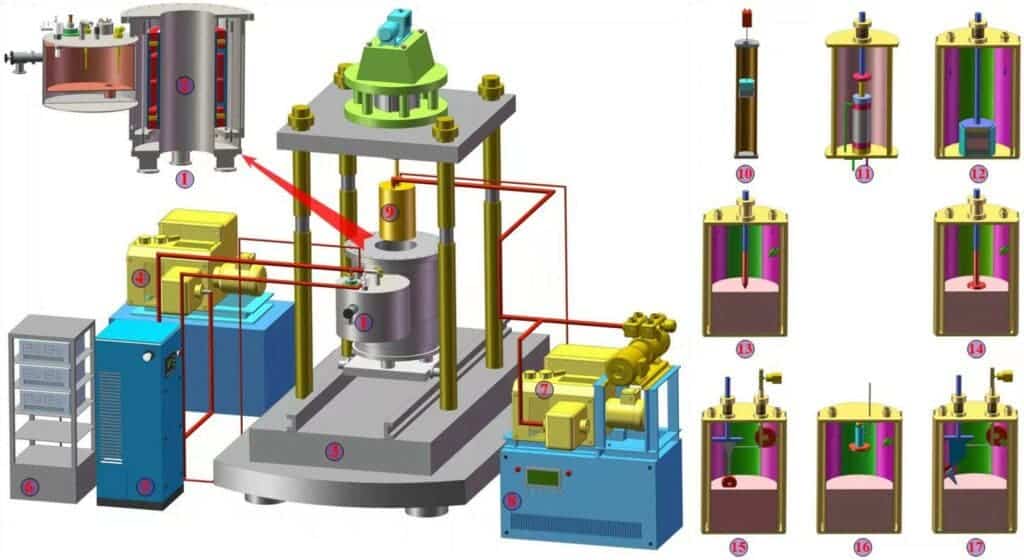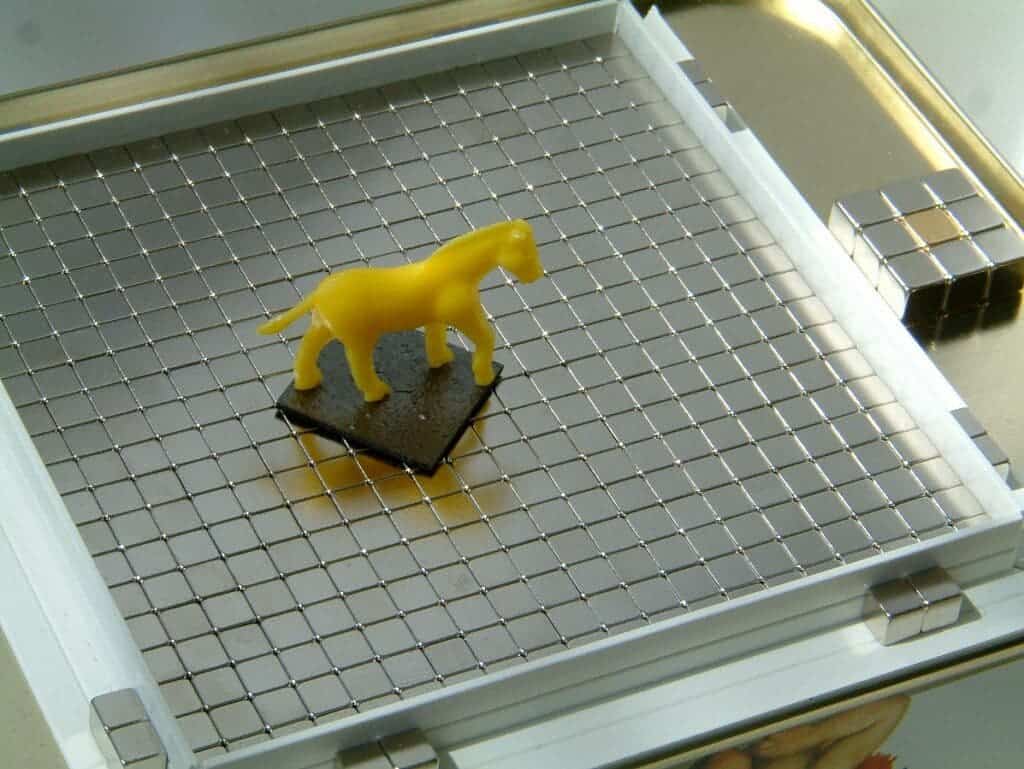Chinese scientists have built an ‘artificial moon’ possessing lunar-like gravity to help them prepare astronauts for future exploration missions. The structure uses a powerful magnetic field to produce the celestial landscape — an approach inspired by experiments once used to levitate a frog.

Preparing to colonize the moon
Simulating low gravity on Earth is a complex process. Current techniques require either flying a plane that enters a free fall and then climbs back up again or jumping off a drop tower — but these both last mere minutes. With the new invention, the magnetic field can be switched on or off as needed, producing no gravity, lunar gravity, or earth-level gravity instantly. It is also strong enough to magnetize and levitate other objects against the gravitational force for as long as needed.
All of this means that scientists will be able to test equipment in the extreme simulated environment to prevent costly mistakes. This is beneficial as problems can arise in missions due to the lack of atmosphere on the moon, meaning the temperature changes quickly and dramatically. And in low gravity, rocks and dust may behave in a completely different way than on Earth – as they are more loosely bound to each other.
Engineers from the China University of Mining and Technology built the facility (which they plan to launch in the coming months) in the eastern city of Xuzhou, in Jiangsu province. A vacuum chamber, containing no air, houses a mini “moon” measuring 60cm (about 2 feet) in diameter at its heart. The artificial landscape consists of rocks and dust as light as those found on the lunar surface-where gravity is about one-sixth as powerful as that on Earth–due to powerful magnets that levitate the room above the ground. They plan to test a host of technologies whose primary purpose is to perform tasks and build structures on the surface of the Earth’s only natural satellite.
Group leader Li Ruilin from the China University of Mining and Technology says it’s the “first of its kind in the world” that will take lunar simulation to a whole new level. Adding that their artificial moon makes gravity “disappear.” For “as long as you want,” he adds.
In an interview with the South China Morning Post, the team explains that some experiments take just a few seconds, such as an impact test. Meanwhile, others like creep testing (where the amount a material deforms under stress is measured) can take several days.
Li said astronauts could also use it to determine whether 3D printing structures on the surface is possible rather than deploying heavy equipment they can’t use on the mission. He continues:
“Some experiments conducted in the simulated environment can also give us some important clues, such as where to look for water trapped under the surface.”
It could also help assess whether a permanent human settlement could be built there, including issues like how well the surface traps heat.
From amphibians to artificial celestial bodies
The group explains that the idea originates from Russian-born UK-based physicist Andre Geim’s experiments which saw him levitate a frog with a magnet – that gained him a satirical Ig Nobel Prize in 2000, which celebrates science that “first makes people laugh, and then think.” Geim also won a Nobel Prize in Physics in 2010 for his work on graphene.
The foundation of his work involves a phenomenon known as diamagnetic levitation, where scientists apply an external magnetic force to any material. In turn, this field induces a weak repulsion between the object and the magnets, causing it to drift away from them and ‘float’ in midair.
For this to happen, the magnetic force must be strong enough to ‘magnetize’ the atoms that make up a material. Essentially, the atoms inside the object (or frog) acts as tiny magnets, subject to the magnetic force existing around them. If the magnet is powerful enough, it will change the direction of the electrons revolving around the atom’s nuclei, allowing them to produce a magnetic field to repulse the magnets.

Different substances on Earth have varying degrees of diamagnetism which affect their ability to levitate under a magnetic field; adding a vacuum, as was done here, allowed the researchers to produce an isolated chamber that mimics a microgravity environment.
However, simulating the harsh lunar environment was no easy task as the magnetic force needed is so strong it could tear apart components such as superconducting wires. It also affected the many metallic parts necessary for the vacuum chamber, which do not function properly near a powerful magnet.
To counteract this, the team came up with several technical innovations, including simulating lunar dust that could float a lot easier in the magnetic field and replacing steel with aluminum in many of the critical components.
The new space race
This breakthrough signals China’s intent to take first place in the international space race. That includes its lunar exploration program (named after the mythical moon goddess Chang’e), whose recent missions include landing a rover on the dark side of the moon in 2019 and 2020 that saw rock samples brought back to Earth for the first time in over 40 years.
Next, China wants to establish a joint lunar research base with Russia, which could start as soon as 2027.
The new simulator will help China better prepare for its future space missions. For instance, the Chang’e 5 mission returned with far fewer rock samples than planned in December 2020, as the drill hit unexpected resistance. Previous missions led by Russia and the US have also had related issues.
Experiments conducted on a smaller prototype simulator suggested drill resistance on the moon could be much higher than predicted by purely computational models, according to a study by the Xuzhou team published in the Journal of China University of Mining and Technology. The authors hope this paper will enable space engineers across the globe (and in the future, the moon) to alter their equipment before launching multi-billion dollar missions.
The team is adamant that the facility will be open to researchers worldwide, and that includes Geim. “We definitely welcome Professor Geim to come and share more great ideas with us,” Li said.









